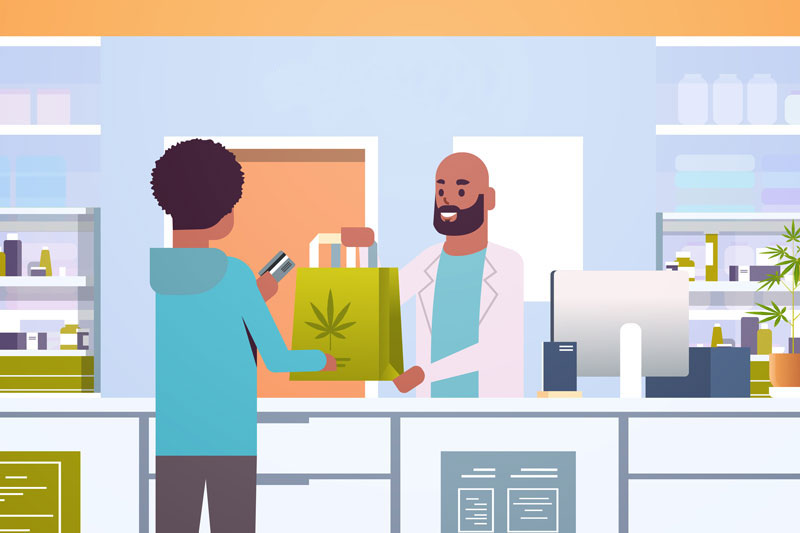Along with the excitement about the fast-growing cannabis industry comes some cautionary tales. As much as some organizations are willing and eager to use data, the fact that everything is so new can make it difficult to get a handle on some of the numbers. Some of the information, in fact, is non-existent or impossible to be shared due to outdated equipment or methods that work for other industries and haven’t been scaled for cannabis purposes.
Some organizations, though, have found solutions that work, and the analytics gleaned from them has helped those organizations stay ahead of the competition. One area in particular in the cannabis industry that benefits from data is enhancing the customer experience. Here’s how your organization can use data to get ahead when it comes to making customers happy.
Using data to bring customers back
Any organization – in any industry – that has success bringing customers in and keeping them coming back is able to do so because of data. Whether that’s by contacting the customer directly through e-mail or text or using sales information to keep track of inventory and making sure favorite products are in stock, businesses have come to rely on certain metrics that can help them cater to their customers.
Businesses often crunch the numbers far in advance to predict demand, making sure products are available when and where customers are looking for them, whether that’s based on holidays or just on a seasonal basis. For years, technology has been in place to do this for organizations in any number of industries by comparing sales to traditional market numbers. However, those numbers don’t always exist for new cannabis companies, so they might need to rely on other ways of using data to generate repeat customer sales.

Starts with sales
Sometimes the best way to make sure customers are happy is not necessarily through customer and inventory data but through recent sales data. This information can help organizations in the cannabis industry recognize sales trends by product type, for example, or it can help zero in on salesperson performance.
Analyzing salesperson performance data helps identify areas where salespeople may require additional training or development. By addressing skill gaps or knowledge deficiencies, salespeople can provide more accurate and helpful information to customers, and in turn make them a trusted source for future purchasing.
Additionally, this same data can also be used to uncover patterns or trends related to customer satisfaction or dissatisfaction. For example, if multiple salespeople consistently face challenges in addressing a specific customer concern, it may indicate a need for process improvements or changes in product offerings.
The more satisfied a customer feels with their sales rep interaction, the more likely they are to become a repeat customer. To build on that, sales rep data can be integrated with customer purchase history and preferences. When a rep interacts with a customer, they can access information about the customer’s previous purchases, interests, and loyalty status, allowing them to generate personalized offers and tailored recommendations.
Customer experience
Loyalty rewards programs are designed to help increase sales while also giving customers a reason to keep coming back. The right analytics solution can help organizations measure the success of a loyalty program, all while making sure inventory is aligning with sales and helping an organization make data-driven business decisions.
A cannabis-focused BI solution can produce reports unique to the industry that can reveal any gaps in sales, breaking down purchases by age group, gender, or location, and showing which incentive programs have been successful and which ones are not producing results. It can also break down the number of total customers to show how many customers are new to an establishment versus how many are returning. Just because cannabis data is newer data in many places doesn’t mean it can’t be interpreted in a way that can give organizations good information.
That information is key to long-term success. A number of factors contribute to customers remaining loyal to a particular business. Sometimes it’s a personal relationship – the customer enjoys being in a store and interacting with the owner. Even then, though, other factors such as customer service and quality products factor in. It doesn’t matter if a customer and a business owner are friends if the product doesn’t meet the customer’s needs. Other elements such as trust, transparency, and an establishment’s willingness to accept feedback all make a customer feel more comfortable and willing to come back.
Data can help an organization measure all of that. Whether it’s responses to a customer survey or hard numbers about purchase history and how many times per year a customer visits, successful businesses use all of that information to build a loyalty program and measure its success.

- Analyzing the Challenges of Pharmaceutical Supply Shortages - April 26, 2024
- Summer is an Opportunity for Digital Transformation in Education - April 17, 2024
- Your Car is Tracking More than Miles per Hour - April 11, 2024



